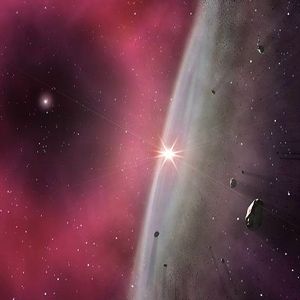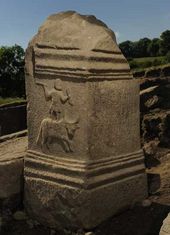
© Travis A. Rector/U of Alaska Anchorage/Heidi Schweiker/NOAOThe "Cygnus Bubble" nebula may actually be a cylinder that is being seen from one of its ends. This image was taken with the Kitt Peak Mayall 4-metre telescope in Arizona.
It looks like a soap bubble or perhaps even a camera fault, but the image at right is a newly discovered planetary nebula.
Planetary nebulae, which got their name after being misidentified by early astronomers, are formed when an aging star weighing up to eight times the mass of the sun ejects its outer layers as clouds of luminous gas (see
Why stars go out in a blaze of glory). Most are elliptical, double-lobed or cigar-shaped, evolving after stars eject gas from each pole (see a
gallery of the nebulae).
Dave Jurasevich of the Mount Wilson Observatory in California spotted the "Cygnus Bubble" while recording images of the region on 6 July 2008. A few days later, amateur astronomers Mel Helm and Keith Quattrocchi also found it.
The bubble, which was officially named PN G75.5+1.7 last week, has been there a while. A closer look at images from the second Palomar Sky Survey revealed it had the same size and brightness 16 years ago. Jurasevich thinks it was overlooked because it is very faint.


